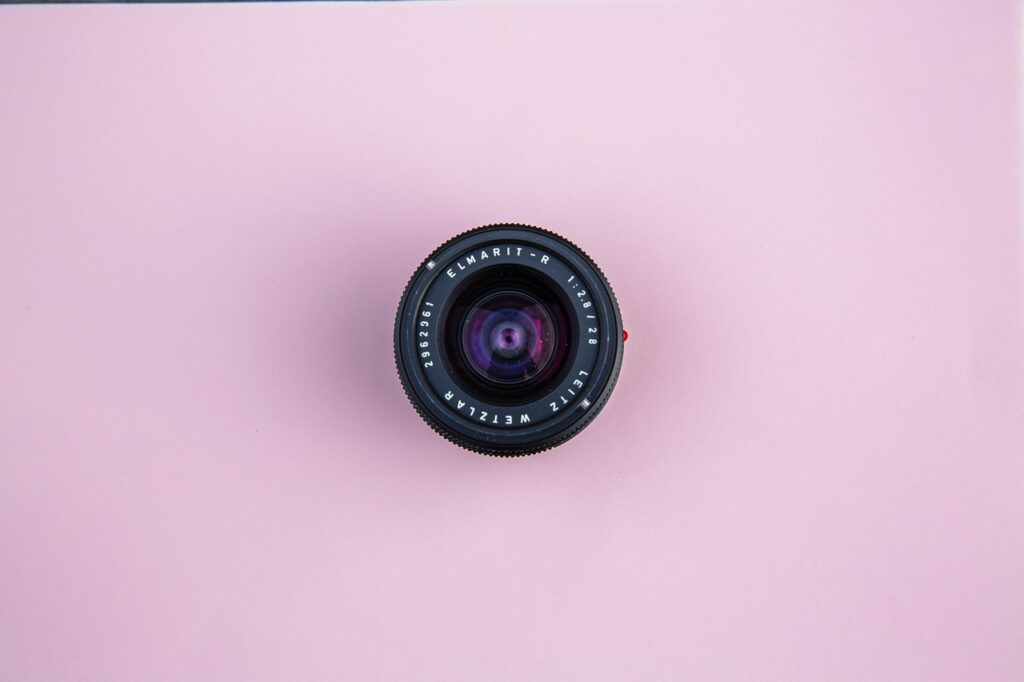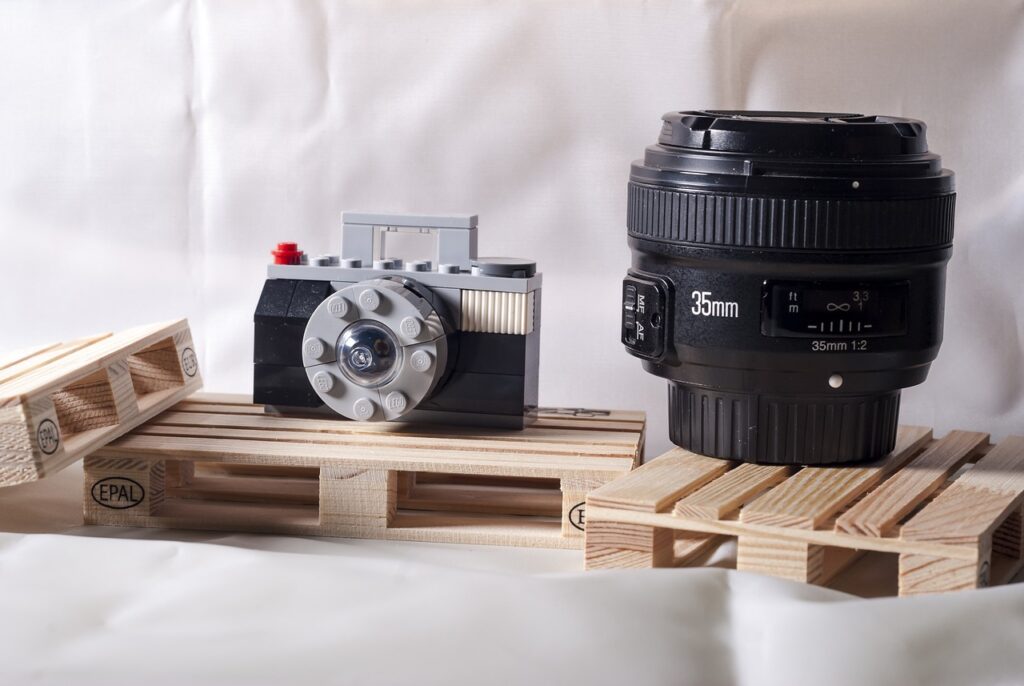
As an Amazon Associate we earn from qualifying purchases.
Although 35mm and 28mm lenses are one of the most versatile lenses you can use to shoot in a wide range of situations, their focal length difference affects their suitability. The following 35mm vs 28mm guide helps you understand their differences and which lens might suit your
Quick Navigation
Camera lenses come in varying specifications, ranging from maximum wide apertures to fixed or variable focal lengths. Although every feature might affect the overall image quality, the focal length tends to be the major factor determining the lens's applicability in different

Typically, focal length refers to the distance between the sensor of the camera and the point of convergence of the lens and is usually measured in millimeters. The focal length helps to determine how much of the scene the camera will capture.
That means even if a 35mm lens and a 28mm lens might have similar maximum wide apertures, out-of-focus systems, and image stabilization systems, their difference in focal length can significantly affect their field of view and application.
A 35mm lens is any lens with a fixed focal length of 35mm. However, you should keep in mind that a lens focal length is specified based on a full-frame camera with a sensor size of 35mm. That means this lens’s angle of view might seem to change when you pair it with a crop factor camera.
|
Brand:
Nikon AF-S 35mm f/1.8
|
Brand:
Canon EF 35mm f/2
|
Brand:
Sony FE 35mm f/1.8
|
|
Compatible Mountings:
Nikon F
|
Compatible Mountings:
Canon EF
|
Compatible Mountings:
Sony FE, Sony E
|
|
Lens Type:
Standard
|
Lens Type:
Wide Angle
|
Lens Type:
Wide Angle
|
|
4.7
|
4.7
|
4.7
|
Like the 35mm lens, a 28mm lens is any lens that has a fixed focal length of 28mm. Again, if you pair this lens with a crop factor camera, the equivalent angle of view might seem to increase.
|
Brand:
Canon RF28mm F2.8
|
Brand:
Sony SEL28F20 FE 28mm
|
Brand:
Nikon NIKKOR Z 28mm f/2.8
|
|
Compatible Mountings:
Canon EOS R-series
|
Compatible Mountings:
Sony E
|
Compatible Mountings:
Nikon Z
|
|
Maximum Aperture:
f/2.8
|
Maximum Aperture:
f/2
|
Maximum Aperture:
f/2.8
|
|
4.5
|
4.4
|
4.7
|
For instance, the equivalent angle of view will increase to 44.8mm when you pair it with a Canon camera with a crop factor of 1.6x or increase to 42mm when you pair it with a Sony or Nikon camera with a crop factor of 1.5x.
Keeping in mind that a lens with a focal length of 35mm and below is considered to be a wide-angle lens, both the 35mm and 28mm lenses are wide-angle lenses with some similarities. However, these focal lengths are still different and have varying effects on the angle of view.
Although the focal lengths of the two lenses are different, there is no significant difference between their fields of view, making them have the following similarities.

Although 28mm and 35mm lenses might have similar apertures, image stabilization systems, and autofocus systems, their difference in angle of view give them magnification and perspective compression differences.
Perspective compression refers to how objects appear closer or far from each other in an image. Although it is a form of optical distortion and doesn't necessarily affect the image quality, it can make viewers misjudge the distances.
For instance, if you're shooting real estate exterior photos, perspective compression can make a water tank in the backyard appear closer to the building than it is. In the same way, rooms in real estate interior photos might appear smaller than they actually are.
Generally, lenses with a narrower angle of view tend to compress the scene and cause a bigger perspective compression than their wider counterparts. As a result, subjects in photos shot with a 35mm lens appear closer together, and the scene is more cluttered than ones shot with a 28mm lens.
The camera sensor size doesn't change whether you pair the camera with a telephoto, normal or wide-angle lens. That means the scene the camera lens views have to be constricted and squeezed to fit in the camera sensor.
Keeping in mind that wide-angle lenses have a wider field of view, it means a larger part of their view will need constriction to fit in the edges of the frame. Usually, this constriction causes a form of distortion known as barrel distortion.
Since 28mm is wider-angle than 35mm, it means the distortion in Sony FE 28mm is larger. As a result, subjects shot with 28mm lenses might look more distorted. For instance, the wall edges or angles of a real estate exterior property might look more deformed when shot with a 28mm lens compared to 35mm.
Although the weight and size of the lens can vary widely depending on the construction materials and whether the lens is designed for crop-factor cameras or full-frame cameras, it also varies with the focal length.
Since focal length is the distance between the camera sensor and the lens's point of convergence, it means a longer focal length translates to a longer lens barrel. Usually, this translates to more size and weight, making a Nikon 35mm unit larger and heavier.

The major distinguishing factor between a 28mm and 35mm lens is the magnification, which is the ratio of the subject size in the image to its real-life size. Usually, a subject will appear larger and occupy a bigger portion of the frame when it's nearer to the lens.
For instance, if you are taking macro photos of an insect on a flower, the insect will appear larger and more magnified when the lens is a couple of inches away than when it's several feet away. Since longer focal lengths have a smaller field of view, they create a cropping effect.
This reduces the area occupied by the background in the photo, making the main subject more prominent in the frame. That means a 35mm lens can magnify a subject and fill the frame with a distant subject better than a 28mm unit.
Considering that a 35mm unit has a cropping effect that creates a better telephoto perspective, it might be the lens to use in the following situations.
Since a 28mm lens offers a wider field of view compared to the 35mm unit, it might be the best lens to use under the following circumstances.
Although the two lenses have close focal lengths that make them overlap one another in suitability, a 35mm lens might be more versatile as it shares the applicability of a wide-angle lens when paired with a full-frame camera and the applicability of a normal 50mm lens when paired with a crop-factor camera.
Whether you are taking wide-angle exterior photos or shooting distant subjects, the above 35mm vs 28mm guide helps you understand which lens has a wider field of view and which can magnify tiny subjects. Remember that the angle of view might change depending on the camera sensor size.
